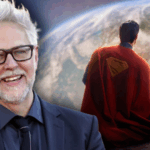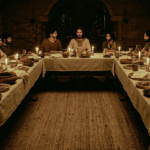Note: This analysis contains spoilers for Avengers: Infinity War, Captain Marvel, and Wonder Woman.
It seemed appropriate on International Woman’s Day that I should find my new family owned cinema and watch Marvel’s latest instalment Captain Marvel. In the comic giant’s cinematic universe, it certainly seems that this new (to the big screen) female character could be the only superhero able to take on Thanos, who wiped out half of all life in the universe in Avengers: Infinity War.
I couldn’t help but compare it to Wonder Woman, one of only a couple of movies that I returned to watch on the big screen, because it was so good.
As strong, powerful, female superheroes, both with some feminist history behind their characters, they warrant a little comparison. Both have been written and rewritten over time in their respective publishers, so their origins can be a little tangled. Both, however, have some interesting roots.
Wonder Woman, also known as Diana Prince, came first, debuting in 1941 at All American/Detective Comics in the same era as Superman and Batman. She was created by psychologist William Moulton Marston and was heavily inspired by his wife Elizabeth Holloway Marston and their polyamorous life partner Olive Byrne. These two women were strong feminists. Olive’s aunt was birth control advocate and suffragette Margaret Sanger and her mother, Ethel Byrne, opened the first birth control clinic. Elizabeth, a psychologist and attorney, was the bread winner for the family for most of their married life, while Olive looked after the four children. Marston had two to each woman. Marston wanted to create a character like Superman but who would forgo the violence to respond with ‘The Power of Love’. Elizabeth is said to have told him that ‘this super-hero had better be a woman’.
The Carol Danvers character was created by Roy Thomas and Gene Colan in 1968. She was an Air Force Officer and a colleague of the original Captain Marvel, Dr Walter Lawson, a Kree alien. It wasn’t until 1977 that she became Ms. Marvel when she was exposed to energy from an explosion that fused her genetic structure with Lawson’s. Her title was quite progressive at the time – Ms. was associated with the feminist movement of the 1970’s. It was a nod to Gloria Steinem’s feminist magazine Ms., of which Wonder Woman graced the first cover. It wasn’t until 2012 that Danvers became Captain Marvel after taking on her mentor’s mantel.
In Wonder Woman, the young Princess Diana, daughter of Queen Hippolyta, is raised on the idyllic Paradise Island, Themyscira, surrounded by powerful Amazons. These women are versed in arts, culture, learning, history as well as being warriors and stateswomen. They have been tasked by Zeus with the noble role of protecting humanity from Ares, God of War. They love Diana and seek to protect, guide and prepare her for her role as the ultimate God killer, despite the Queen’s disillusionment with humanity as selfish and evil.
Carol, on the other hand, has a very different upbringing. Only very briefly hinted at in the movie, but expanded more in Marvel’s 2018 definitive origin story, The Life of Captain Marvel, Carol’s childhood is one of violence and abuse. Her father beats her two brothers while her mother tells Carol not to interfere because it will only make things worse. When she tries to stop it, Carol receives a beating. Her brothers pick on her too. In the movie, they are seen telling her to stay down after they have thrown her to the ground and that she doesn’t belong on the go cart track because she is too slow. There is little love or nurture in her childhood.
Wonder Woman’s power, abilities, indeed her very demi-god existence, were designed and created for a purpose, to protect humanity and destroy Ares. Her bracelets are defensive as well as explosive when brought together. Her lasso is designed not only to make Wonder Woman’s captives tell the truth, but for both to see into that person’s heart and for the good that is always there to be illuminated. Her clothing is designed for maximum freedom of movement when in combat, at least in her eyes.
Captain Marvel’s powers are an unforeseen consequence of blowing up the drive of a light speed engine created by a Kree scientist. Her existence as a super powered human is an accident. She is used by the Kree as a soldier in Starforce to fight their enemies, the shapeshifting Skrull. Somewhat predictably, this whole conflict is a lie and her powers have been limited by the Kree to keep her manageable.
Wonder Woman’s motivation is love for humanity and her duty to Zeus as a protector of his human creation. Her naivety surrounding human goodness is coloured as she witnesses the brutality of World War I. She questions, albeit briefly, whether humans deserve to be saved when they are capable of such violence and evil, even after Ares is destroyed. Ultimately, however, her grace enables her to see the complexities innate in being human and she continues her protective mantel.
Only known as Vers to the Kree, Carol’s motivation is more about proving herself capable when she has completely lost her memory as an earth born human. Revenge and disillusionment mark her actions. It is not until she learns that the Skrull are refugees, scattered across the galaxy and hunted to the point of extinction, that there is any sense of concern for others. Even then, it feels more about getting back at the Kree who lied to her than genuine concern for the Skrull.
Both of these female characters were created by men, but Wonder Woman had strong feminist influences and was always a superhero (though limited for a time when she was relegated to the Justice League’s secretary, and plotlines became focused on romance, mirroring social conventions and laws in the United States at the time). Carol Danvers was, perhaps, ahead of her time being an officer in the US Air Force, but she was initially only a love interest and didn’t have super powers until nine years after she was originally penned. She seems derivative, based on an already existing male character – she even takes his name 44 years later. It is possibly fair to say that both these character’s feminist leanings have risen and fallen with the waves of feminist movement and who was writing their stories.
Both film studios chose women to be directors of these female solo films. Wonder Woman was directed solely by Patty Jenkins, while Captain Marvel was co-directed by Anna Boden and Ryan Fleck, who were also both script writers. This bodes well for the characters’ on-screen futures. Wonder Woman will have a second solo movie, Wonder Woman 1984, and Captain Marvel will return in Avengers: End Game.
Dr Katherine Grocott













